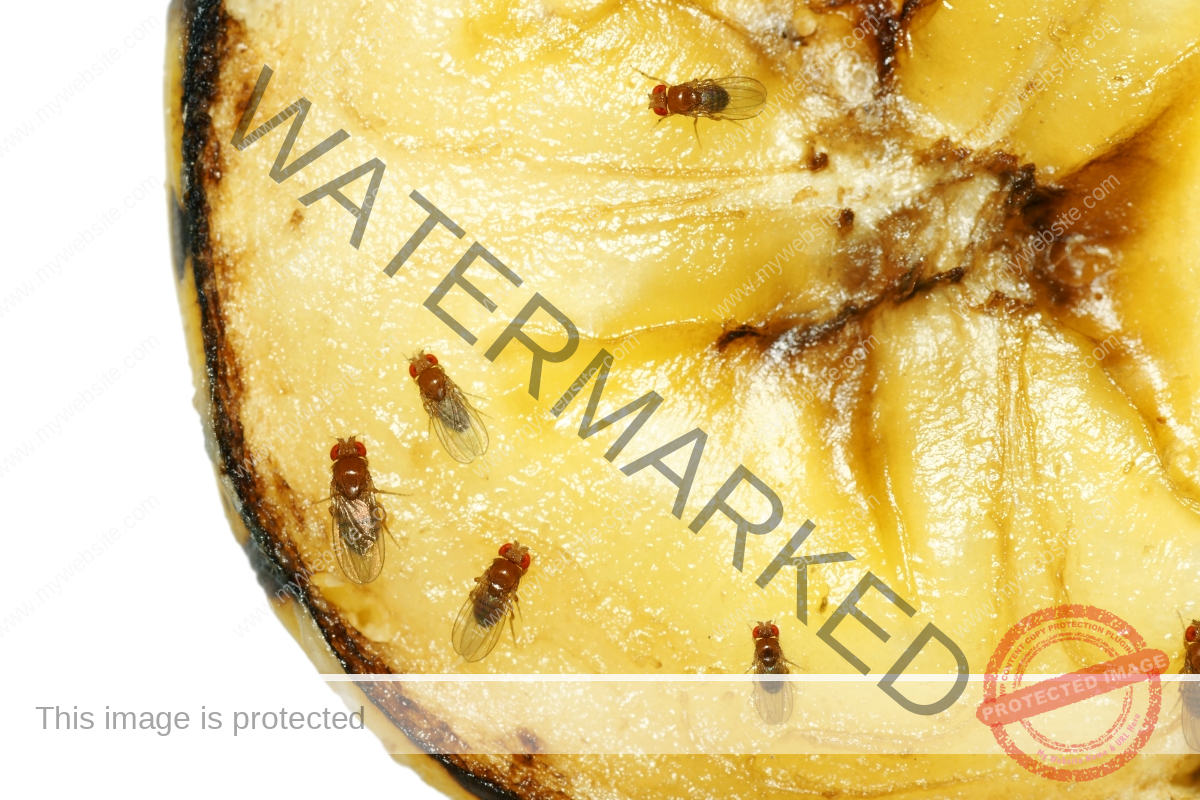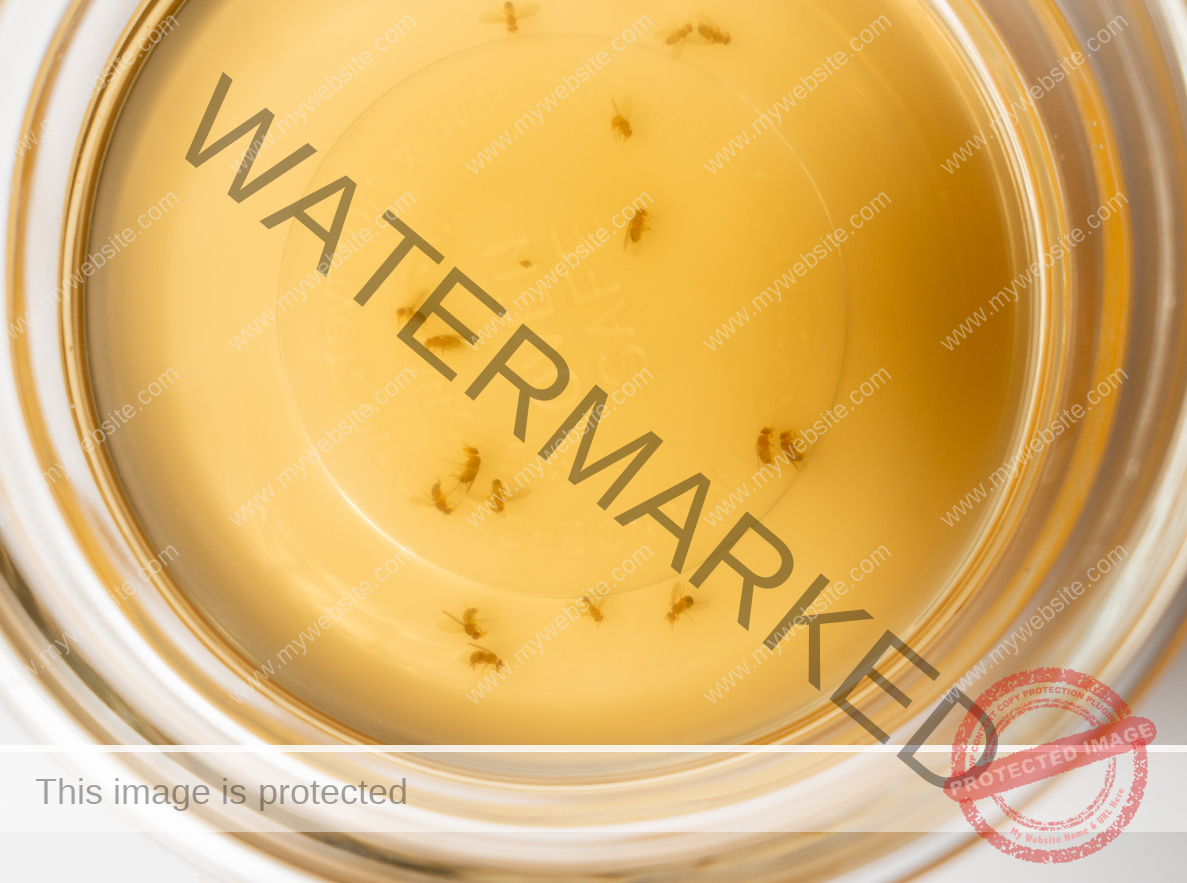
If tiny winged insects are constantly drawing you to the flyswatter, you may be dealing with a pesky fly infestation in your home. The question is, what kind of flies are they? Drain flies (also called maggots, filter or sewage flies) and fruit flies (also called pomace or vinegar flies) are some of the most common culprits. Knowing how to tell the difference between drain flies and fruit flies will help you find the best solution for getting rid of them.
Although these small flying insects are often mistaken for each other, they have some distinguishing characteristics that help tell them apart. By knowing their appearance, behavior, feeding and breeding grounds, and the time of day they are most likely to appear, you will be able to tell what type of fly is wreaking havoc inside your home. Knowing which fly you are dealing with will make it easier to eliminate the pests and prevent drain fly or fruit fly infestations from recurring in the future.
What are drain flies?
there are drain flies small black flying insects Which are commonly found in bathrooms and kitchens. These pests often lay eggs in clogged sinks and floor drains, which gives them their common name. While drain fly larvae may not be visible inside the drain, adult drain flies can be seen congregating on nearby sinks or walls. To get rid of drain flies Invariably, it is often necessary to thoroughly clean any affected drains.
- scientific name: Psychodidae
- Body: The body of drain flies is hairy and covered with wings. They also have long antennae.
- Colour: Drain flies can be brown, gray or black in color.
- size: Most drain flies are very small, about 1.5 mm to 5 mm long.
- Place: Drain flies are attracted to organic matter and standing water, so they are commonly found around leaky pipes, toilets, slow-running shower drains or clogged sinks.
What are fruit flies?
Fruit flies are small flying insects that are attracted to sweet foods and fruits. These insects reproduce rapidly, meaning a few fruit flies can quickly turn into a large infestation.
Although they do not pose any significant health risks, it is still a good idea to start get rid of fruit flies As soon as possible to prevent this small irritation from becoming an ongoing problem.
- scientific name: Drosophila melanogaster
- Body: Fruit flies have round heads and oval-shaped bodies covered with transparent wings.
- Colour: Fruit flies are often dark in color but can also be brown or amber in color.
- size: The average size of a fruit fly is 3 mm to 4 mm (length).
- Place: Fruit flies love food scraps and can be found around trash cans, fruit bowls, dirty dishes, and pet food dishes.
Difference Between Drain Flies and Fruit Flies

Are drain flies and fruit flies the same? No, these are actually two different insects. To Get rid of pests in the houseIt is important to know what type of pest you are dealing with. Fortunately, there are some simple ways to distinguish these flies from each other.
Drain flies are darker and hairier than fruit flies,
One important difference between fruit flies and drain flies is their appearance. While both types of flies have small bodies, “drain flies… have a more moth-like, hairy appearance because of their hairy bodies and wings,” says Lorne Hanevich Clark’s Termite and Pest Control, a service with several offices in central South Carolina. In comparison, fruit flies have a rounder, more slender shape and clearer wings.
These flies also vary in color. The external skeleton of drain flies is brown, black, gray or brown. He added, “The dark color of drain flies helps them blend in with the organic matter (‘guck’) found in drains and sewage systems.” In contrast, fruit flies have brownish-yellow stripes or spots, often appearing gray or brown. Fruit flies also have large red or dark eyes; Fruit flies with dark eyes are slightly larger.
Fruit flies and drain flies prefer different food and breeding sites indoors.
Another way to figure out whether you’re dealing with fruit flies or drain flies is to pay attention to where they lay their eggs and what they eat. “Fruit flies are attracted to overripe fruits, vegetables, and fermented liquids, making kitchens and garbage disposal areas common infestation sites,” Hanwich says. These pests can often be found in or around fruit bowls, sink drains, empty bottles, garbage bags, mops and cleaning cloths. They are particularly attracted to the sugars in fruits and vegetables, especially as they decay and yeast and mold begin to break them down. Fruit flies are also attracted to meat, dairy, grain, garbage and other items that provide a food source in dark, moist places such as sewer and water lines.
You may be wondering why drain flies swarm in your home. Drain flies are attracted to rotting material inside drains, and this is where they feed and breed. “Drain flies…lay their eggs in organic matter on the walls of drains, sewage pipes and septic tanks,” says Henevich. They can often be seen flying from clean sinks, which can be worrisome.
Drain flies are nocturnal, while fruit flies are more active during the day.
To help determine if you have drain flies or fruit flies, pay attention to the time of day when they are most active. Hanwich explains: “Drain flies are most active during the evening and night, making them more likely to be noticed when the light is low. Fruit flies are diurnal, attracted to light, and are usually seen flying around kitchens and fruit bowls during daylight hours.
The way each type of fly enters the house is also illuminating. Fruit flies usually enter the home by laying eggs on the surface of organic materials such as fruits and vegetables. Drain flies enter through drains, windows and basements. They are often found resting on walls or near breeding material. If you are looking little black bugs in the bathroom Along the kitchen, these are more likely to be drain flies.
DIY traps can help you catch and identify which flying insect you are dealing with.

Sometimes the only way to find out the type of flies that have invaded a home is to catch a few and examine them closely. It is quite easy to make a DIY trap that will kill insects and help you make an ID.
A common DIY trap for fruit flies involves using apple cider vinegar as bait in a container covered with plastic wrap and with small holes. Other fruit fly trap Luring insects with liquid bait or light. They are then killed using electric shock, adhesive pads, or some type of physical barrier that they cannot escape. plug-in fly trap Use a combination of light and sticky cards to attract and trap flies.
To catch and kill drain flies, Hanwich recommends making a DIY trap that “uses a mixture of sugar, water, and dish soap in a container placed near affected drains.”
How to Prevent Drain and Fruit Flies

University of Maine Cooperative Extension Recommends addressing fly infestations regularly drain cleaning or other places where fermenting material may accumulate. However, some other sensible cleaning practices can also help get rid of pesky pests.
According to owner Jerry Wang DIY insect warehouse“Fruit flies will lay eggs around rotting fruits and vegetables. When disposing of fruits and vegetables, garbage bags should be sealed so that air cannot come in and out. Sealing the bag prevents fruit flies from escaping, he adds, “and when the eggs hatch, they will be trapped inside the garbage bag.”
When dealing with drain flies, Wang highlights the importance of properly cleaning kitchen sink pipes. “The sink is a U-shaped part of the pipe. Sometimes food sediment can accumulate at the bottom of the pipe,” he says. “This is where drain flies will lay eggs. “Clean the pipe with high pressure of water and make sure it is 100 percent clean.”
Follow these additional cleaning tips to prevent fruit flies and drain flies from becoming a problem:
- empty and clean dustbin And compost bins again and again.
- Dispose of overripe fruits.
- Clean and tighten food container lids.
- Clean counters and tables immediately after meals.
- Clean sink drains with a bottle brush and grease-cutting cleanser and then rinse with warm water.
- Wash dish towels and hand towels regularly.
- Wipe thoroughly as they are a common breeding ground for fly eggs and larvae.
questions to ask
Mosquitoes, drain flies and fruit flies have different forms and behaviour. Drain flies congregate around standing water or drains and have a moth-like, hairy appearance. Fruit flies are similar to small houseflies and are attracted to rotting food. It can be especially difficult to distinguish fungus gnats versus fruit flies, but like mosquitoes, mosquitoes have long legs.
The presence of drain flies does not mean that you have mold in your home. However, drain flies are attracted to moisture and standing water, and mold is likely to grow in these conditions. It is always wise to find and eliminate any moisture sources that attract drain flies.
If fruit flies are suddenly appearing it means they have found a food source in your home. Some common culprits include overripe or rotten fruit, dirty dishes, or clogged trash cans.
Drano can be effective in getting rid of fruit flies and drain flies. However, the harsh chemicals in Drano can be harmful to the environment and harmful to your plumbing. A natural drain cleaner, such as a baking soda and vinegar solution, can be a safe option.
The sudden appearance of drain flies may be a sign of a broken or clogged pipe. If you have a persistent drain fly problem that doesn’t go away with drain cleaning, it may be a good idea to call a plumber.



